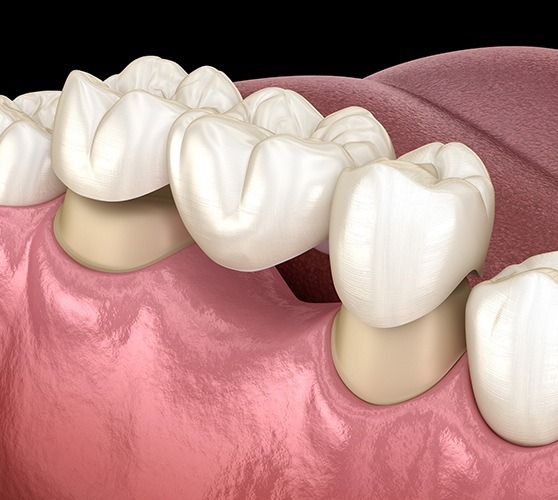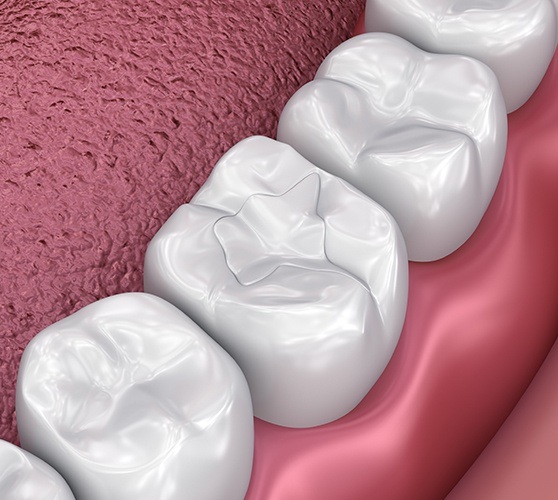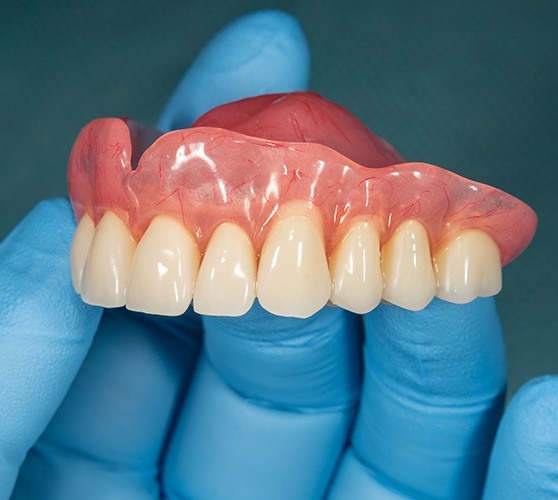Restorative Dentistry – New Bedford, MA
What to Do About Damaged or Missing Teeth

When you’re young, you might feel like your teeth are indestructible, but that is far from the case. About 15 million people in the United States have crown or bridge replacements; damaged and missing teeth are much more common than many people would like to think. The good news is that there are plenty of options to choose from when you need help to restore the strength and shape of your smile. Do you have an injured or lost tooth? Call us right away for restorative dentistry in New Bedford, MA.
Why Choose Sound Dentistry for Restorative Dentistry?
- Only Board-Certified Prosthodontist in Area
- Strong Focus on Esthetic Dentistry
- Implant Placement Offered In-House
Dental Crowns & Bridges

A crown is one of the most common types of dental restorations. Not only does it cover the tooth to lower the risk of infections, but it also holds the weakened structure together and prevents further damage. Our dental office offers EMAX crowns as well as zirconia and porcelain crowns; all of these materials are lifelike in appearance while also being durable. When teeth are missing altogether, a bridge is used instead; it rests on two natural teeth and uses prosthetic teeth called pontics to fill in the gap.
Learn More About Dental Bridges
Learn More About Dental Crowns
Tooth-Colored Fillings

Almost everyone has had a cavity or two at some point in their lives. When it happens to you, you need to have it filled quickly before it grows even worse. Traditional amalgam fillings have largely fallen out of favor nowadays; instead, we offer composite resin fillings, also known as tooth-colored fillings. As you can probably guess from the name, they’re used to fill in the empty space left by tooth decay with a substance that closely resembles natural tooth enamel.
Full Mouth Rehabilitation

When multiple teeth are damaged, the entire bite could be in jeopardy. The full mouth rehabilitation process involves thoroughly examining the damage and using a combination of crowns, bridges, and other fillings to reverse it. Special attention will be paid to how the teeth come together when you close your mouth in order to minimize wear and tear. We try to take a conservative approach to full mouth rehabilitation in order to preserve as much natural structure as possible.
Dentures

What can you do if multiple teeth are missing? A partial denture can be useful if you’ve lost teeth in separate parts of the mouth, but a full denture is your best choice if most or all of the teeth in an arch have already been compromised. While dentures usually rest on the gums (or are held in place with a metal clasp in the case of partial dentures), they can also be anchored to dental implants in order to keep them permanently anchored in place.
